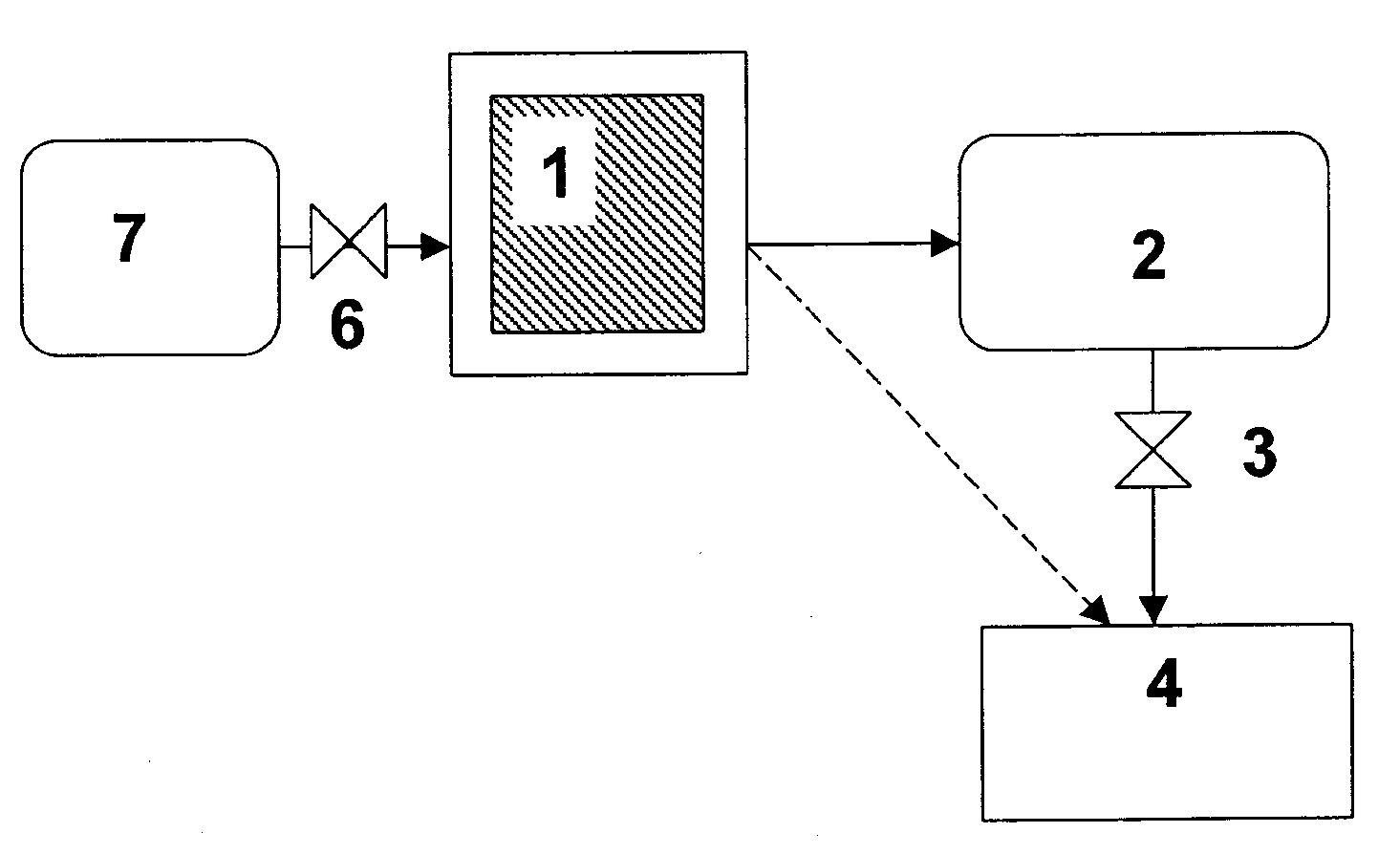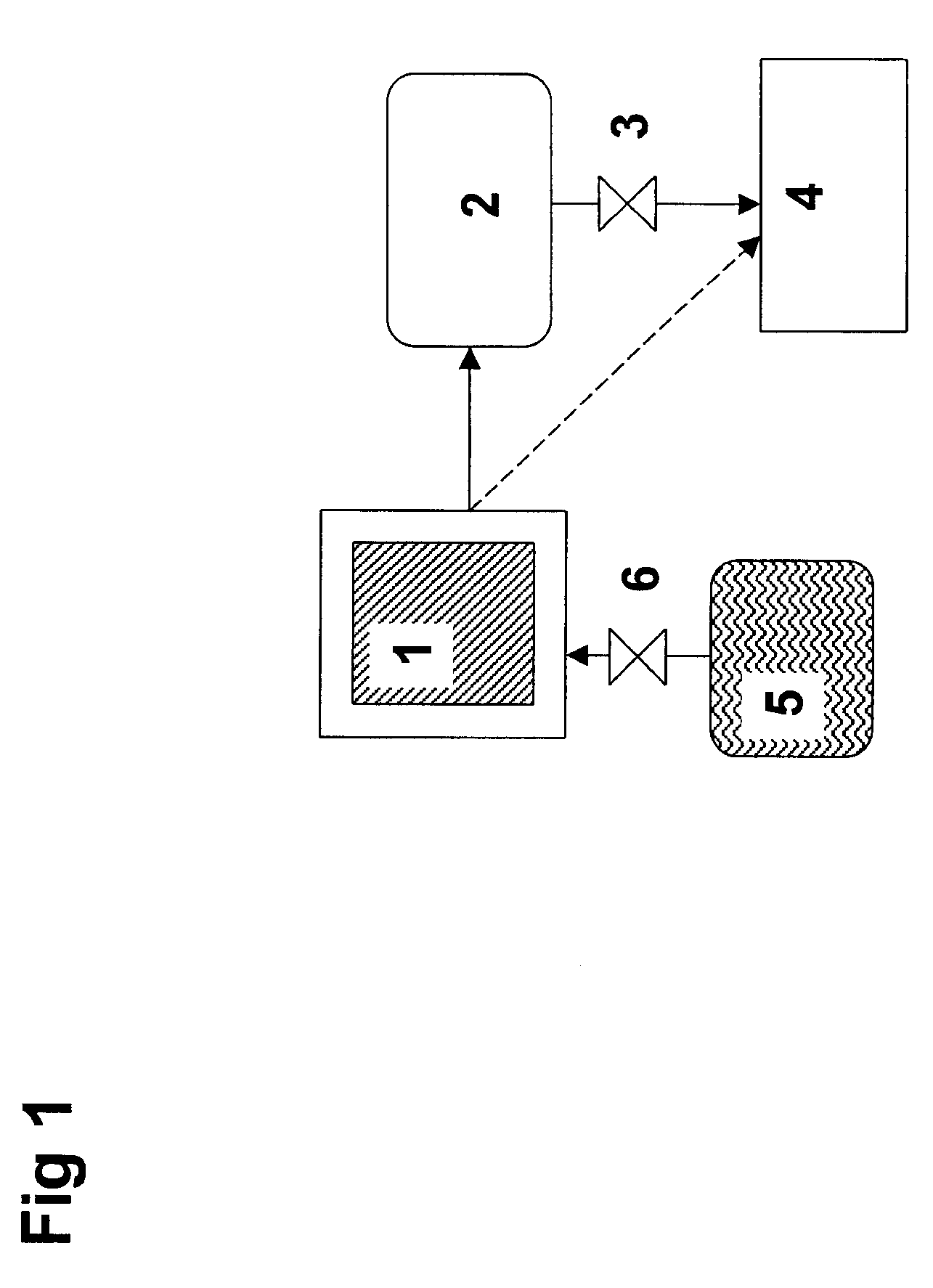Efficient Release of Ammonia from a Solid Ammonia Storage Medium
a technology of solid ammonia and ammonia storage medium, which is applied in the field of ammonia containing materials, can solve the problems of ammonia slippage, inability to catalyze nosub>x /sub>using conventional car exhaust catalysts (three-way catalysts), and inability to use and store ammonia as liquid ammonia in high-pressure vessels for normal end-user applications. , to achieve the effect of high nox conversion
- Summary
- Abstract
- Description
- Claims
- Application Information
AI Technical Summary
Benefits of technology
Problems solved by technology
Method used
Image
Examples
Embodiment Construction
[0040]Ammonia can be stored safely and efficiently as a solid material—more specifically as metal ammine complexes of the general formula Ma(NH3)nXz, wherein M is one or more cations selected from alkaline earth metals, and / or one or more transition metal ions, such as Mn, Fe, Co, Ni, Cu, and / or Zn, X is one or more anions, a is the number of cations per salt molecule, z is the number of anions per salt molecule, and n is the coordination number of 2 to 12.
[0041]Such complexes may bind water molecules more strongly to the material than the already absorbed ammonia molecules. Consequently, ammonia may be released—and thereby released—by forcing ammonia out of storage material by a controlled dosing of water. The source or water or whether water is dosed as a liquid or gas is not crucial. In both cases, the absorption of water into the crystal structure will result in release of ammonia. Water may be dosed via a spray or atomization or similar kinds of processes generating droplets. A...
PUM
| Property | Measurement | Unit |
|---|---|---|
| equilibrium pressure | aaaaa | aaaaa |
| density | aaaaa | aaaaa |
| skeleton density | aaaaa | aaaaa |
Abstract
Description
Claims
Application Information
 Login to View More
Login to View More - R&D
- Intellectual Property
- Life Sciences
- Materials
- Tech Scout
- Unparalleled Data Quality
- Higher Quality Content
- 60% Fewer Hallucinations
Browse by: Latest US Patents, China's latest patents, Technical Efficacy Thesaurus, Application Domain, Technology Topic, Popular Technical Reports.
© 2025 PatSnap. All rights reserved.Legal|Privacy policy|Modern Slavery Act Transparency Statement|Sitemap|About US| Contact US: help@patsnap.com



